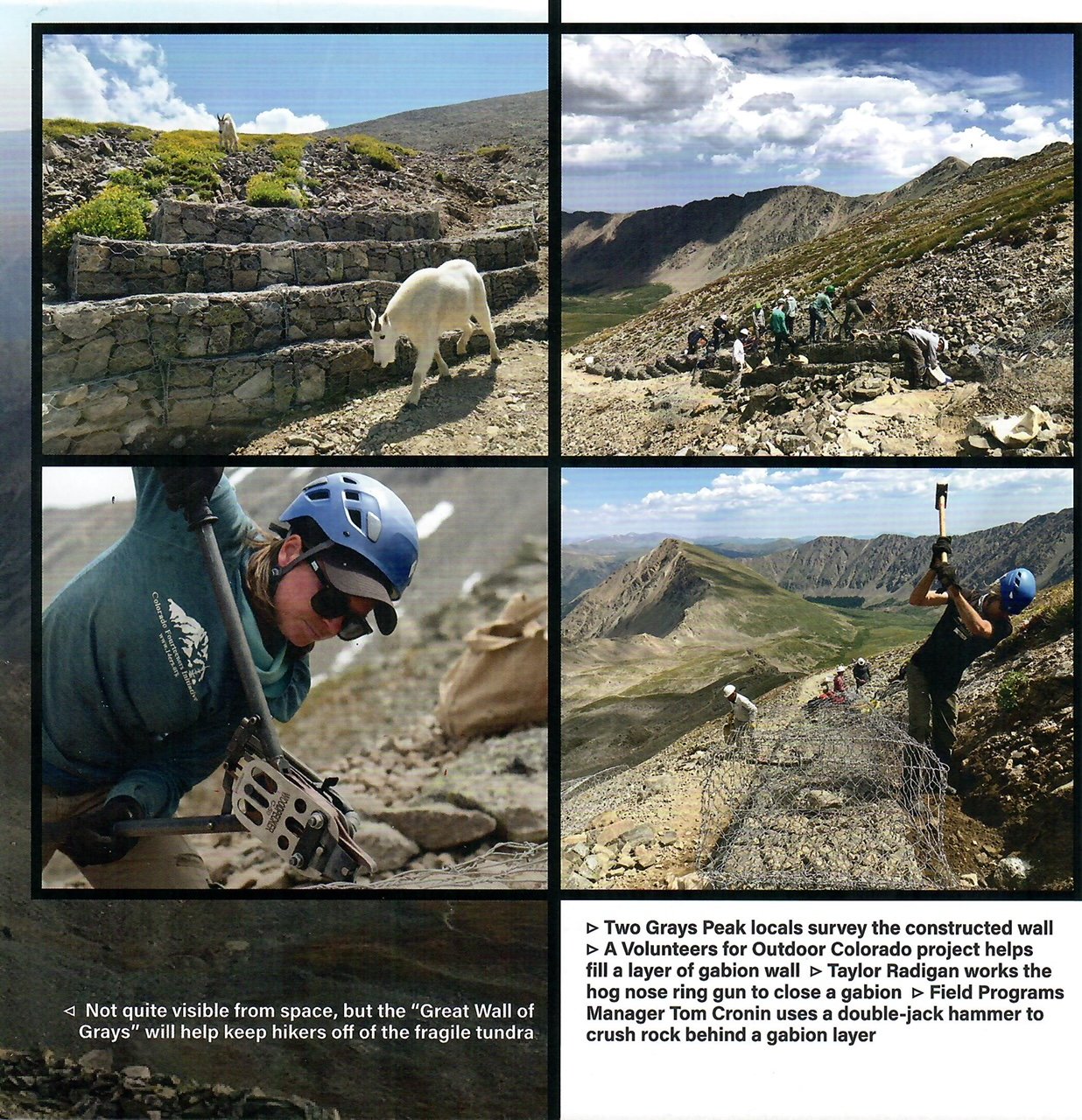Trail Daze
The headlamp parade
Full moon morning
A Typical Day on Grays and Torreys in Summer 2021
I'm awakened by the blare of the alarm on my phone at 5:25 am. It's a lot better than waking up at 3:25 to hike by 4, as we did earlier in the season. It's still dark, so I turn on my headlamp to get ready. The air is crisp, and I get dressed in my sleeping bag, having slept with my base layers in the bag. This keeps it all warm through the night. By 5:40, I leave the warmth of my tent and head into the 8'x12' canvas tent CFI provides as a cooking area. I prepared my lunch, snacks, and water for the day the night before, so all I have to do is drink a copious amount of Mio and I'm ready to go by 6. Before starting the hike, I visit the pit toilet at the trailhead. This is a luxury exclusive to Grays and Torreys; every other crew uses 5-gallon buckets called groovers.
So many great sunrises
The hike always starts in the dark, and usually, several people shine their headlamps directly into my eyes on the way up. The blinding light in my face has become a huge pet peeve of mine. It's a steady climb for a little under a mile, then relatively mellow for about another mile.
Watching the sun rise over the alpine makes the climbing over the last three-quarters of a mile up to the worksite a whole lot nicer. Just before the Grays and Torreys split, at about 13,200', the work begins after a snack and some more Mio. Unless I've been carrying something the project needs up to the worksite, the gabion building usually starts at 7:30 am, roughly an hour and a half after starting the hike.
The crew in action
Gabions are big metal cages we put rocks in. Ours are 3'x6'x1.5'. My 2-person crew is using them to build retaining walls for the fragile soil in the high alpine. It takes about 1,000 years for an inch of topsoil to form the habitat for rare alpine plants to grow. These plants rarely grow in non-alpine areas in the lower 48. They are well-adapted to survive the harsh conditions of the areas they grow in, but 5-10 footsteps can kill them. Therefore, we ask folks to stay on the trail and leash their pets when hiking in an alpine area. Sometimes they listen. We witnessed a lot of fights between dogs, dogs running by without humans, and both wandering onto the alpine plants. Please don’t do this.
A bunch of gabions
To build a gabion, there are many steps. The metal comes fabricated but flattened, and must be assembled into its box shape after we carry it up the mountain. The assembly process takes about a half-hour. Once the gabion is constructed into a rectangle, it is placed into its location in the retaining wall structure and filled with rocks. Before the gabion can be placed, the ground under where it will live must be dug out to ensure it lays at the the proper angle.
RMYC carrying gabions
Putting the rocks in the gabions takes a few hours if the rocks are already in place, but I spend most of my time gathering the proper stones and bringing them to the worksite. Quarrying is sometimes looked at as the grunt work of trail crews, but without the right rocks, the project is going to be more difficult. We gather large volumes of rocks of sizes from fists to about three feet wide. Filling half the bottom with one big rock is very satisfying and reduces the time it takes to fill the cage. Once it’s filled, we seal it shut with the hog nose ring gun.
Makin’ the newsletter
We take a 15 minute snack break in the morning and another in the afternoon, with a half hour for lunch in the middle. Weekends are busy, with about 1500 hikers per day. Almost everyone on the mountain is great, but some people can be frustrating and most people have the same questions. Sometimes I entertain myself by telling folks that we’re setting up traps to catch the elusive Alpine Lobster before explaining their actual purpose. Gabions hold in rocks too small to build with, which is necessary on this mountain because there aren’t enough big rocks at the top. We use them to create retaining wall structures to prevent erosion.
Sometimes the captions write themselves
As long as the weather holds out, which only means we didn’t think there was any lightning within five miles, we work until 3 pm and start to hike down. The goal is get back around 4 pm to complete the 10-hour workday. We do that for eight days in a row, then get six days off. It’s not easy work at any elevation, especially above 13,000 feet. The job has great rewards though. We built 62 gabions over the five-month season, moving an estimated 250,000 lbs. of rocks into cages. It wouldn’t have been possible without the assistance of volunteers and a crew from the Rocky Mountain Youth Corps. Sometimes hikers even listened to us and learned why they should leash their dogs and stay off the plants in the alpine. We put this massive structure most of the way up a 14er, which was a unique experience.












